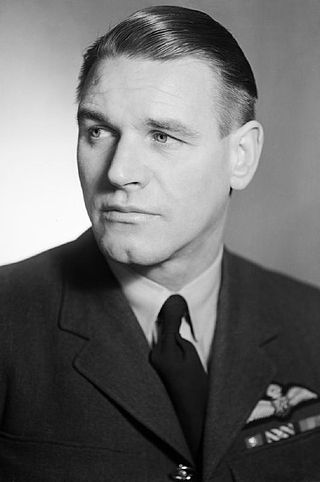
Adolph Gysbert Malan,, better known as Sailor Malan, was a South African fighter pilot and flying ace in the Royal Air Force (RAF) who led No. 74 Squadron RAF during the Battle of Britain. He finished his fighter career in 1941 with twenty-seven destroyed, seven shared destroyed and two unconfirmed, three probables and sixteen damaged. At the time he was the RAF's leading ace, and one of the highest scoring pilots to have served wholly with RAF Fighter Command during the Second World War.

Wing Commander Lance Cleo "Wildcat" Wade DSO, DFC & Two Bars was an American pilot who joined the Royal Air Force (RAF) during the Second World War and became a flying ace. He remained with RAF until his death in a flying accident in 1944 in Italy. He was described as a "distinguished American fighter ace who epitomized perhaps more than any other American airman the wartime accords between Britain and the United States".
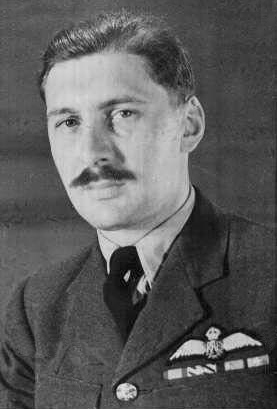
James Joseph "Orange" O'Meara, was a Royal Air Force officer and fighter pilot of the Second World War. He became a flying ace during the Battle of Britain while flying the Supermarine Spitfire, and by war's end was credited with 11 kills, two shared victories, one unconfirmed destroyed, four probables, 11 damaged and one shared damaged.

Wing Commander Robert Roland Stanford Tuck, was a British fighter pilot, flying ace and test pilot. Tuck joined the Royal Air Force (RAF) in 1935 and first engaged in combat during the Battle of France, over Dunkirk, claiming his first victories. In September 1940 he was promoted to squadron leader and commanded a Hawker Hurricane squadron. In 1941–1942, Tuck participated in fighter sweeps over northern France. On 28 January 1942, he was hit by anti-aircraft fire, was forced to land in France, and was taken prisoner. At the time of his capture, Tuck had claimed 29 enemy aircraft destroyed, two shared destroyed, six probably destroyed, six damaged and one shared damaged.

John Everitt Frost, was a South African fighter ace during the Second World War. He was the highest-scoring member of a South African Air Force squadron during the war, credited with the destruction of 15 Axis aircraft. South African pilots with higher numbers of kills, such as Pat Pattle and Adolph "Sailor" Malan, were members of the British Royal Air Force.
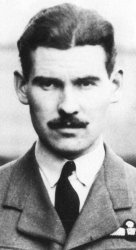
William "Cherry" Vale, was a Royal Air Force (RAF) fighter pilot and flying ace of the Second World War. He was credited with 30 enemy aircraft shot down, shared in the destruction of three others, and claimed 6 damaged and another two shared damaged. His 20 kills achieved while flying the Hawker Hurricane and his 10 with the Gloster Gladiator made him the second highest scoring Hurricane and biplane pilot in the RAF, in both cases after Marmaduke Pattle.

Raymond Hiley Harries, was a Royal Air Force fighter pilot and flying ace of the Second World War. Harries scored 15 victories against enemy aircraft, as well as three shared kills, two probable kills and five damaged during the war. Harries is also credited with the destruction of a V-1 flying bomb.
Maurice Michael Stephens, was a Royal Air Force flying ace of the Second World War. Stephens scored 17 kills, three shared kills, one probable kills and five damaged.

Petrus Hendrik Hugo, was a South African fighter pilot and flying ace in the Royal Air Force (RAF) during the Second World War.
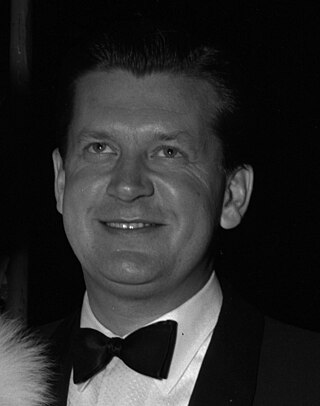
Anthony Charles Bartley, was a British film and television executive, and fighter pilot. As a Royal Air Force (RAF) Spitfire pilot, Bartley was awarded the Distinguished Flying Cross for his actions during the Battle of Britain, during which he became a fighter ace.

John Francis Jackson, DFC was an Australian fighter ace and squadron commander of World War II. He was credited with eight aerial victories, and led No. 75 Squadron during the Battle of Port Moresby in 1942. Born in Brisbane, he was a grazier and businessman, who also operated his own private plane, when he joined the Royal Australian Air Force (RAAF) Reserve in 1936. Called up for active service following the outbreak of war in 1939, Jackson served with No. 23 Squadron in Australia before he was posted to the Middle East in November 1940. As a fighter pilot with No. 3 Squadron he flew Gloster Gladiators, Hawker Hurricanes and P-40 Tomahawks during the North African and Syria–Lebanon campaigns.

Robin Pare was a South African flying ace of World War II, credited with five 'kills'.
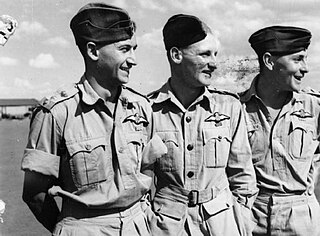
Servaas van Breda Theron was a South African World War II fighter ace, credited with 10 'kills'.

Laurence 'Laurie' Wilmot was a South African flying ace of World War II, credited with 4 'kills'.

Douglas William Golding is a South African flying ace of World War II, credited with three 'kills'.
Eric Cowley Saville (1922-1943) was a South African flying ace of World War II, credited with 8 'kills'.

Brian John Lister Boyle, DFC (1917-1993) was a South African flying ace of World War II, credited with 5 'kills'.
Douglas Haig Loftus (1917-1991) was a South African flying ace of World War II, credited with 4 'kills' and 1 shared.
Dennis Vernon Dold Lacey (1919-1942) was a South African flying ace of World War II, credited with 5 'kills' and 2 probables.

Henry Patrick Lardner-Burke (1916-1970) was a South African flying ace of World War II, credited with 7.5 'kills'.
















